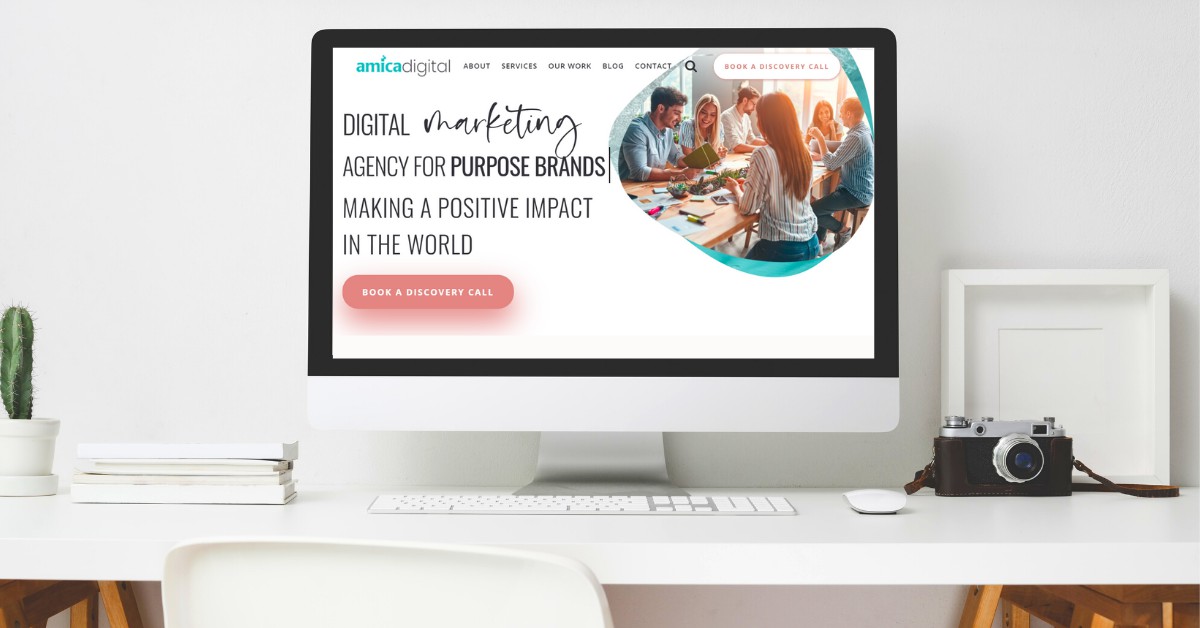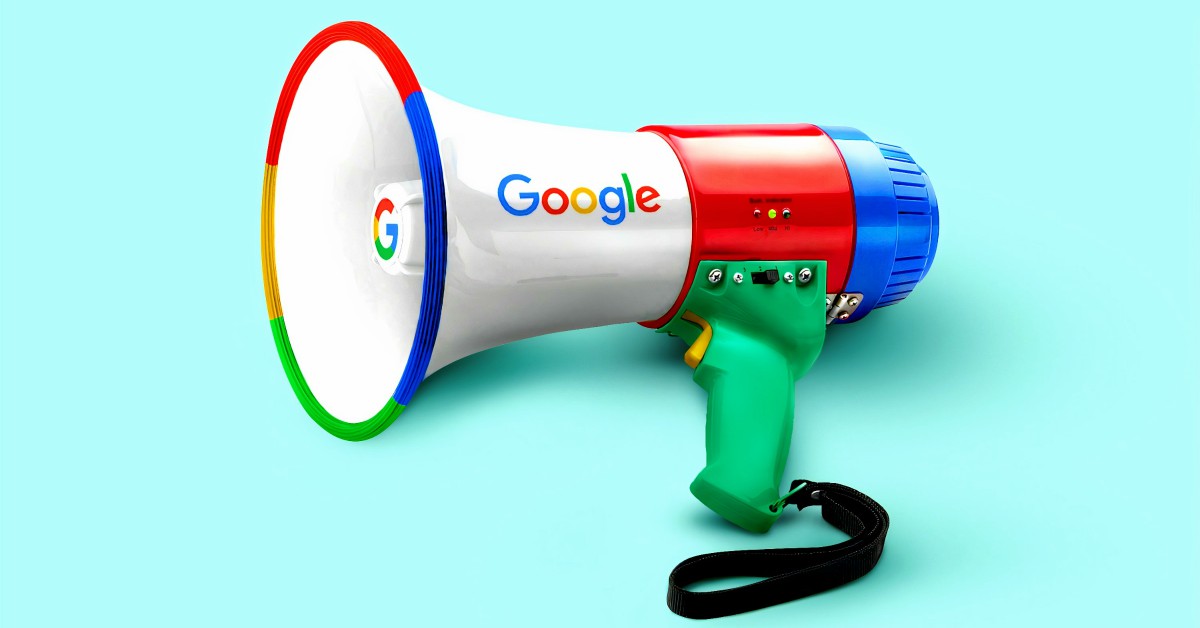Good design is a key factor in the success of your website. It can greatly affect your conversions and the impression your audience has of your brand. Design not only pertains to how your pages look but more importantly, how your website works. Good website design means a good user experience and a well-structured page performs better and improves your chance of ranking well in Google.
So, what makes a good website design? There are a lot of things to consider so we broke it down for you.
Good Website Design Speaks to Your Target Audience
The first step in the process of creating a good website design is asking the question, ” Who is my target audience?” Internet marketing gives you the opportunity to reach everybody who has access to the internet. But this is not a good idea unless you have a very big budget. While it’s true that millions of people use the internet, not everybody will be interested in what you’re offering. Knowing your target audience is super important so that you can focus your marketing efforts on the right audience.
Once you’ve defined your target market, the next step is to create a design that appeals to them. To do this, you need to know your audiences’ needs, pain points and expectations of your products or services.
A good website design that is tailored to the target audience will result in:
- Better user experience (UX)
- Increased Engagement and Conversions
- Higher search rankings
Designing your website for your target audience means creating content and functionality that will interest and help them. After all your efforts in advertising and marketing campaigns, your website is where you will close the deal with your customer. If your website doesn’t communicate properly with your audience, it may leave a negative impression that will ultimately affect your business.

What is Good Website Design
Obviously, a good website design is a must. Why? For one, it can literally dictate the success or failure of your business. And website design as we stated earlier is not all about the visual design or the “look” of your website. Another factor to consider is the functionality and usability of your website.
In fact, a simple looking website with great usability will rank higher in Google than a clever or overly-creative website with confusing navigation and poor user experience.
Here are the important elements of a good website design:
- Simple and clean layout. With website design, simple and clean is best. A cluttered website with too many features may be distracting to your audience. It can also make navigation more difficult. Make sure that the Call to Action (CTA) and your products get the most attention. Design your website layout with plenty of white space. This will make your pages cleaner and easier to read.
- Easy-use navigation. To make navigation easier, the menu should be accessible on all pages. This will ensure that your visitors can access any page they need. Always remember the “three-click-rule”. This means your customers should be able to get the information they need within three clicks maximum. In fact, the fewer the better.
- Interesting and quality content. Interesting content is the best way to keep your visitors engaged. The longer they stay on your site the better. Invest in a good copywriter to bring out key messages. It is important to take time developing compelling and informative content such as blog posts, website copy and other content that relates to your business. Always make sure to use clear images and try not to use too many stock images. If you use stock images, crop them or add a colour wash or overlay to make them more customised.
- Mobile responsive. Your visitors are more likely to access your website with smartphones and tablets. Mobile responsive websites look great on all devices and help in making sure that visitors can easily navigate to what they are looking for. Having a mobile-friendly website also helps to increase the visibility in search engines that results in more visitors and conversions.
- Branding. Your website represents your brand. That’s why it’s important to have design consistency in your logo, website, social media and other materials such as your brochures, etc. Your visitors should be able to always make a visual connection to all aspects of your business for your website to be memorable and credible.
- Effective Conversion. Not all visitors to your website will be ready to buy your products or services immediately. Therefore a good way to build a relationship with them is by offering them something of value like a free download, free consultations or maybe a coupon to use in your online store.. All of these are great calls to action (CTA) that can be accessed through a click of a button or a simple form to fill out on your website.
A good website design consists of all of these elements. Correct implementation of these will ensure that your website has a higher probability of attracting traffic and converting your leads to customers. If you want to know what a bad design does to your website, check out this fun article from Studio1 Design – one of our design partners.
Website Design vs. Website Development
When looking for services to build your website, you usually see packages that offer both website design and development. Are they the same? Do you really need to have a designer and a developer?
Before you proceed with the process of making your website, you and your designer and developer should discuss if you want to build a custom site or build it from a theme. Here are the features of each:
Custom Site
A custom site is a website design that is specifically made for your brand. It means that everything is built from the ground up. Here are the pros and cons.
Pros
- You will have a unique design that is tailored for your brand.
- It is easier to adapt to any of your business’ needs.
- A good designer can make sure the design is optimised for conversion.
Cons
- It is more expensive.
- The process takes longer.
- You need to make sure that is developed in a way that is easy for you to update. Page Builders like Elementor and Divi are great for this.
Template / Theme Site
This is the most common way to start a website. Every website platform offers themes that you can use. Here are some of its pros and cons.
Pros:
- Can be more cost-effective.
- Doesn’t require complex coding to build your website.
- Most themes have a support team that can help you when you encounter issues.
Cons:
- There are built-in features for each theme so there are limitations when it comes to customising it.
- The theme may not continue to be supported meaning it gets out of date and may stop working.
- It may not be optimised for conversion – it might just look nice.
After considering all the factors you should make a decision based on what best fits the needs of your business and then you can proceed to the designing process.
Now, let’s discuss the difference between website design and website development.
Website Design
Basically, a website designer will focus on the look and layout of your website. They will usually make a design for each page of your site and submit it to you for approval. They will often use software like Adobe to create the design and other visual elements for your site. However, designers usually don’t develop the website in terms of actually coding it in WordPress or Shopify or your chosen platform. You need a developer for that.
A good website designer must consider the client’s objectives to create a design that is aesthetically pleasing that fits the brand and the business. There are basic design principles that can be used such as:
- Balance – using correct proportions of images and text.
- Contrast – using contrasting sizes, textures, shapes and colours to define or draw attention to a specific section of your page.
- Unity – using visually connected design all throughout your pages.
- Emphasis – using emphasis or drawing more attention to important sections of your pages. Remember if everything in your page is highlighted, nothing will stand out and attract attention.
As a comparison, web designers are like architects. Architects will design your house but they will not build it.

Website Development
The job of a website developer or a programmer is basically translating the design into code in your chosen hosting platform. They will often use HTML, CSS, Javascript, PHP and various programming languages to make sure that your website functions according to the design.
Your designer’s design plan is just a picture, it doesn’t function since it’s just an image of the website. Developers take that design and break it into components, translate them in programming codes or use website builders such as WordPress Elementor or a Theme to make sure your website is interactive and has great functionality.
Successful website development will result in:
- Optimised website. Having high quality content is one side of the coin. The other is making sure that your target audience find your website first when they search. To do this, you should fully utilise meta tags, alt tags, heading tags and other HTML coding. These factors always help in your SEO and therefore increase your chances of ranking higher in search engines.
- 301 redirect. It is common to redirect from one page to another. For example if you no longer need a page or a page is out of date. When doing this, it is recommended to use 301 redirect.
- Optimised pagespeed. A website that takes forever to load usually loses it’s visitor. Everyone expects fast pagespeed when they are visiting your site. A slow website leaves a negative impression and most likely to turn your audience away from your business. There are ways optimse your website. You can do the following:
- Make sure all the images are optimised – not too large.
- Choose good hosting.
- Compress all of your files.
- Make sure your HTTP requests are minimised.
Website developers are comparable to civil engineers. They get the architect’s designs and build it.
Website design and development go hand-in-hand. There is a definite distinction between the two and it’s rare to find someone who is an excellent designer and an excellent developer – they are left and right side brain activities.
However, today there are website platforms that don’t require complex coding so designers with some development skills can build websites. In fact some basic platforms like Wix and Squarespace don’t require design or development skills – anyone can use them to build a basic website.
So, do you still need to hire both a designer and a developer? We think the answer is YES because, with a developer and designer working together, you should end up with a great design that is well coded and therefore converts. You don’t want to waste your money on a design that doesn’t deliver on your goals.
Fortunately, most agencies offer a package that includes both website design and development. It is an all-in-one solution if you’re planning to build or create a design for your website. To see samples of our website design and development work, click this link.
Best Website Platforms: Pros and Cons
When building a website, you need a good platform. Think of it as the foundation of your website. There are a lot of platforms you can use so choosing the right one can be a little tricky. Here are some popular website platforms and their pros and cons so you can make up your mind on what best fits.
There are two kinds of website platforms. Self-hosted and hosted. A self-hosted platform is an open-source software that is free but you will need a separate hosting service for storing your files. You will also need to purchase a domain for your website. On the other hand, hosted platforms are Software as a Service (SaaS) platforms that offer an all-in-one solution where all you need in building your site is located in one place. Usually, hosted platforms are paid while self-hosted like WordPress are free.
WordPress
Almost everybody knows WordPress is a great site to build your website. In fact, over 80% of all websites using an open-source platform are powered by WordPress.
Pros:
- You have a full control of your website. You can make any kind of website you like. For example, you can build personal websites, eCommerce Stores, membership sites and many more.
- WordPress.org is free unless you install paid plugins.
- There are over 55,00 plugins that you can install and it offers powerful SEO plugins.
- You can choose from thousands of free themes for your website design if you don’t want a custom website.
- It is easier to design your website because of its drag and drop feature.
- There are thousands of people who know how to use WordPress so you will always be able to find help if you get stuck.
Cons:
- There is a learning curve if you’re going to manage your website yourself.
- Installing a lot of plugins may cause problems with your website because they will need constant updates.
- While WordPress is free, you will need a domain name and web hosting that costs money.
- There are regular updates to WordPress, Themes and Plugins so you need to maintain your website.
Shopify
Shopify is a popular hosted website platform for eCommerce stores. If you’re building a pure eCommerce store, Shopify is highly recommended. There are different Shopify plans depending on the size of your business and your requirements.
Pros:
- It is innovating and adding more features while still remaining easy to use.
- It is fully hosted so it requires less management and you don’t need to constantly update.
- It offers a wide range of integrated payment options such as Shopify payments or a third party payment gateway.
- You reCommerce store will have full inventory management with unlimited products, powerful stats and easy marketing solutions.
- You can design your website with an easy drag and drop feature.
- You can integrate Shopify into WordPress or just build an eCommerce store with blogs in Shopify.
Cons:
- It is not free.
- It is growing in popularity so there are more developers who know the programming language
- Liquid which is required for Shopify.
Squarespace
Squarespace is another hosted website platform that offers great designs and ease of use.
Pros:
- It offers enterprise-grade solutions for hosting your website.
- It includes many website designs that are ready for all types of content, fully customisable and allows a website to use multiple templates at once.
- Adding content is easy. You just choose where to put your content and start typing. It also has an easy drag and drop feature that allows you to make designs within minutes.
- It offers an eCommerce plan if you want to launch your eCommerce store.
Cons:
- Offers limited third party integrations.
- Limited payment gateways for your eCommerce store
- Difficult to move your website if you decide to move to another platform.
Wix
Wix is a popular cloud-based website platform. It is a fully hosted platform.
Pros:
- One notable difference of Wix from other builders is that it is an unstructured editor. This means that it let’s you drag and drop elements anywhere in your page. With other builders, some elements are pre designed and have constraints with their placements. Wix doesn’t have that.
- Since it is a fully hosted platform, you don’t have to pay for hosting.
- You have access to a ton of templates for your website design.
- You can install plugins which add new features to your website.
- You get free SSL with all Wix plans.
Cons:
- If you are using free and connect domain plans, ads may show on your website. You need to upgrade into a free plan to remove the ads.
- It is very complicated to migrate from Wix to other platforms.
- It is not free.
- It has very limited integrations with other software.
GoDaddy Website Builder
GoDaddy is a large domain name and hosting service provider that offers websites that you can quickly build.
Pros:
- It is a super simple tool to create your website within hours.
- You can drag and drop your elements in their pre-loaded templates.
- It has an integrated photo library from Getty Photography.
- You can build your website using your mobile device.
- It is a good choice if you want to build an easy and simple website.
Cons:
- It is not as customisable as other website builders.
- It offers fewer design templates and features.
- It is difficult to migrate your website from GoDaddy to other platforms.
- It is not free.
- it is generally not a good choice for content-rich websites.

What to Do After Website Design and Development
After you’ve successfully launched your website, you need to take care of it. Good website design and functionality are great foundations in establishing the credibility and awareness for your website. After some time, you need to consider two important things for your website’s growth. Fresh content and maintenance.
Importance of Fresh Content
Content is what sets you apart from your competitors. It is also a way of communicating and sending a message to your customers about your products or services.
Components of your content such as your website copy, business info and images are usually established at the launch of your site. So, how do you provide fresh content? The best way to do this is through a blog. Adding fresh, interesting and informative blog posts are important because:.
- It helps with Indexing. When you upload new content such as blog posts, search engines will index your new content. Frequent updates with fresh content means frequent indexing that can increase the chances of getting higher search engine ranking.However, with adding fresh content, adding plenty at a time is not the solution. The key is to upload good quality content consistently.
- Fresh content adds more keywords to your website. Adding fresh content means adding more keywords on your site. The Google ranking algorithm considers the keywords or phrases on your website to determine which pages are most relevant to a person’s search, which is the reason why SEO is a major digital marketing strategy. When you add a blog post with good SEO, you add more opportunity for the search engines to recommend your website and attract more visitors.
- It helps in spreading brand awareness and establishing authority. When you’re launching a business about a certain product or service, you want to be the authority in that niche. This means that you want your audience to look for solutions to their problems on your website first.Adding informative and reliable content related to your niche will prove that you’re an expert in that field. When visitors look for solutions on your website, your website trust is enhanced. This can result in greater possibility that your visitors will share or recommend your website through social media shares, etc.
- It keeps your audience updated. You can send customers or subscribers email campaigns about new blogs that are posted or new promos for your products. Doing this will nurture the relationship you have with your audience and translate them into conversions.
By now, you’ve probably heard of the phrase, “Content is King”. Always prioritising quality and regular uploads of new content will greatly help with your brand and business.

Importance of Ongoing Maintenance and Support
Website maintenance means regularly checking your website for issues and keeping it updated. This is important to keep the website healthy, to get higher SEO and Google rankings and continued traffic growth.
Regular website maintenance it important because:
- It keeps your website secure. You don’t want hackers to steal your website. In order to prevent this, you should make sure that your website is keeping up with software patches and security updates.
- It optimises website performance. Failures to update or fix small problems on your site can lead to poor website performance which leaves a negative effect to your users.
Ongoing maintenance is a big part of taking care of your website. You should have a regular maintenance plan in place.
Do you want to know if your website is performing well? You can audit your website for free by filling out the form below:
All of these requirements can be overwhelming so take a look at our services. You can mix and match based on the skills and tasks you need to outsource. If you’d like some training in some of these essential online business skills, please book a discovery call and we can tailor training to suit your needs.
Book a Discovery Call






No Comments